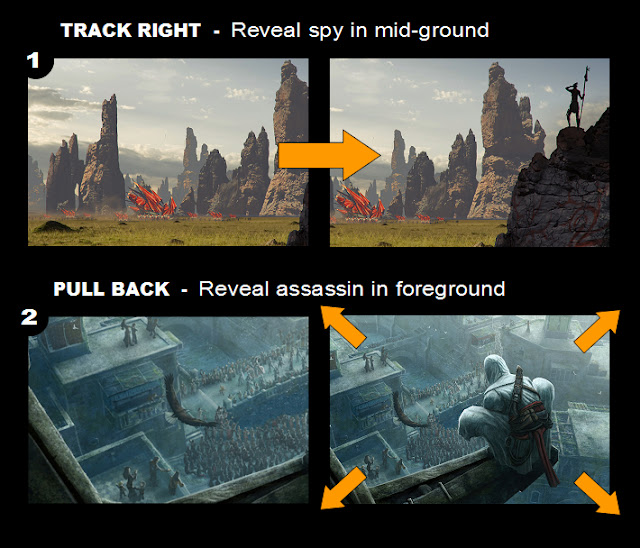.
THE EFFECT
The camera is the audiences vantage point from which they observe the story. Wherever the camera moves, we the audience are subjugated to its p.o.v. In the case of a pull back, we find ourselves moving away from the subject as though we are leaving the character behind. As we pull away, they begin to recede into the distance, diminishing within their surroundings.
This can create several emotional effects depending on the context of the scene. For example:
.
* Abandonment The character reaches out for help, but the camera pulls away as though deserting them in a time of need. This makes the subject look wretched and somewhat sympathetic.
* Diminishment A person of stature is made to look weak and inferior as the camera pulls away. They literally shrink within the frame, no longer prominent in their surroundings.
* Isolation The character rests quietly in open setting. As the camera pulls away, the frame opens and expands, swallowing the subject who recedes into a blank, open space. This move highlights their loneliness and seclusion.
.
EXECUTION.
.
The pull back is typically performed on a track. The opening shot should be quite close to the subject, anything from a close up to a medium shot will suffice. As the drama plays out, wait for a beat where the character suddenly feels deflated or alone. At that point, begin to pull back gradually until you establish a wide angle perspective. The further back you go, the more diminished the character will appear. (Note well, the pull back should be performed slowly to get the best effect).
.
EXAMPLESThe Wire, Season 3: In this scene, the drug dealer Stringer Bell has just found out he has been swindled by some corrupt politicians. He has lost half a million in the deal, and worse, he has lost face as both a gangster and as a businessman. Ashamed and belittled, he sinks onto a bench as the camera pulls away. This once great crime-lord is now nothing more than a poor thief, with very few friends in his nefarious circle.
Bad Santa: In the opening of this black comedy, we are introduced to Willie, an alcoholic, bit time thief who suffers from self loathing. As he casts a glance to his side, we see a group of friends celebrating - as we cut back to Willie, the camera pulls back, isolating the lonesome crook against an empty room where he has no friends or loved ones.
The Wire, Season 3: In this scene, Detective Roland is in shock after accidentally killing a police man while on shift. His whole career is crumbling before his eyes as he stands in his office, crippled with guilt. As the camera pulls away, he slumps onto his desk. He sits isolated and alone, abandoned by his peers.
.
If you want to keep up to date with my articles on motion photography, then follow my blog via email or join as a member using the options in the upper right hand column.
.
Thanks for reading.







